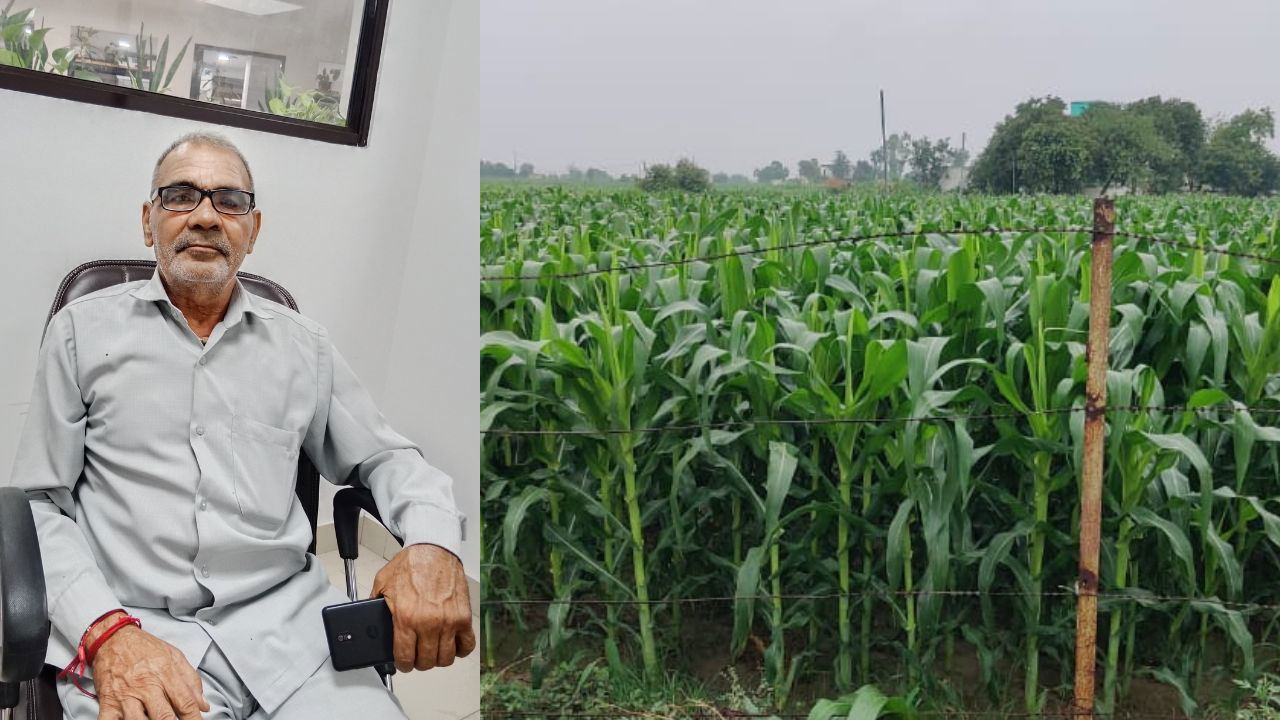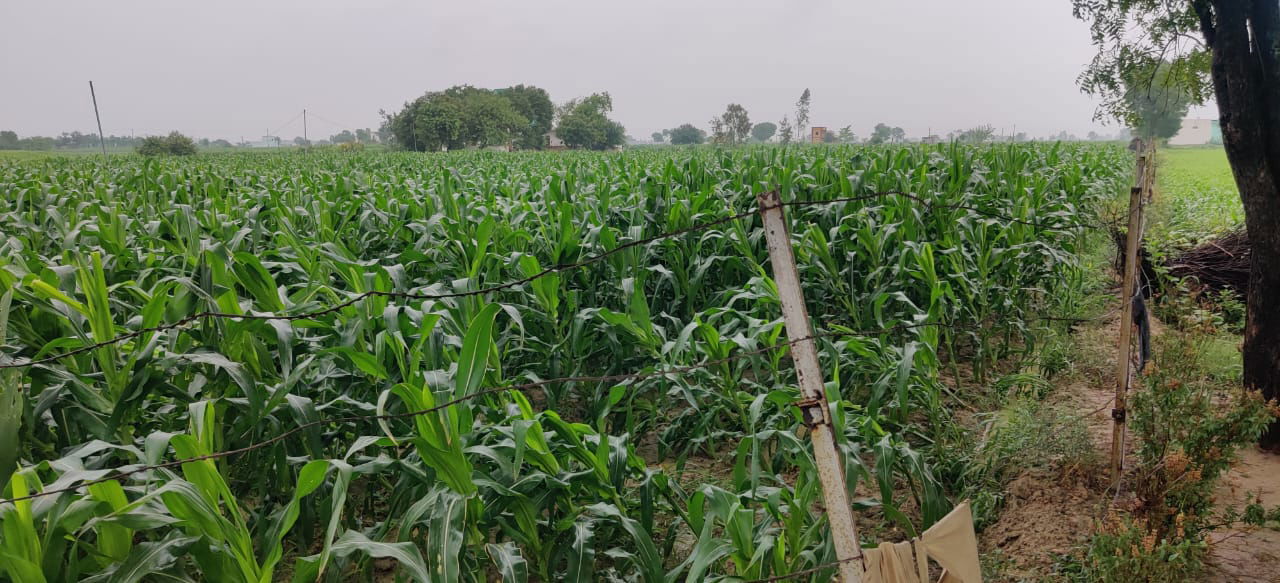
Ramesh Chauhan belongs to the Palwal district in Haryana. He started his farming journey in 1978 by cultivating traditional crops like paddy and sugarcane, which are common across Haryana. These crops were providing him with a steady income, but the returns were never enough to fulfill his aspirations for a better life for himself and his family. "I worked tirelessly, season after season, but the profits were barely enough to cover the costs," Ramesh recalls, reflecting on the struggles of those early years.
In 1998, Ramesh made his first significant shift. He ventured into cultivating mentha (Japanese mint), a crop with higher profitability. This bold move was a step in the right direction, helping him earn a better income and gain confidence in making unconventional decisions.
Decision to Switch to Sweet Corn
After years of growing mentha, paddy, and sugarcane, Ramesh began to sense that the agricultural market was shifting. Consumers’ preferences were changing, and the demand for healthier, diverse, and fresher produce was increasing.
Ramesh’s decision to transition to sweet corn wasn’t just about profitability—it was about finding a crop that could meet the growing demand in local markets. Sweet corn is loved for its taste and nutritional value, making it a popular choice in both rural and urban areas. Ramesh saw this as an opportunity to grow a crop that could offer better returns and quicker profits.
“Switching to sweet corn was the best decision I made,” Ramesh explains. “The demand for it is constant, and the profits are far better than what I was earning with traditional crops.” He soon turned his attention to cultivating sweet corn and vegetables, seeing it as a crop that could be harvested quickly and fetch good prices in the market.
Successful Transition to Sweet Corn
Today, Ramesh cultivates sweet corn and vegetables on four acres of land, having focused exclusively on sweet corn for the past two years. His innovative farming practices allow him to harvest sweet corn twice a year, using the same field to grow wheat during the off-season. However, Ramesh is now considering replacing wheat with cucumber and butternut squash, both of which fetch higher prices—between Rs. 800 and Rs. 1,000 per kilogram—without the need for special protective measures. "I want to make the best use of my land. Every decision I make now is about maximizing returns and minimizing effort," he shares with determination.
Market Demand and Expansion
Ramesh’s decision to cultivate sweet corn has opened up new opportunities, expanding his reach beyond his local village markets. He recalls the first time he sold his produce at Azadpur Mandi, one of the largest wholesale markets in India. "I remember taking my sweet corn to Azadpur Mandi for the first time. The demand was overwhelming," Ramesh recalls, smiling. "It sold out within minutes, and that’s when I knew I was onto something big."
Last year, Ramesh’s daily sales in Palwal Mandi averaged around two to two-and-a-half quintals. Today, those figures have surged to eight to ten quintals a day, with demand continuing to rise. "I bring five quintals of sweet corn to the market every day, and it sells out within 20 to 25 minutes," he says, still in awe of how much his business has grown. For Ramesh, sweet corn isn’t just a crop—it’s the foundation of a new life filled with financial stability and opportunities for growth.
Cost and Profit Analysis
What sets sweet corn apart from other crops, according to Ramesh, is its cost-effectiveness and high profit margins. He shares that he sells sweet corn at Rs. 15 per kilogram, earning around 1 lakh from just one acre in 70 days. His production costs are approximately Rs. 20,000 per acre, leaving him with a profit of Rs. 75,000 to Rs. 80,000 in just over two months. "The numbers speak for themselves," he says with satisfaction. "I’m earning four times more than what I used to with traditional crops."
Recently, Ramesh earned Rs. 80,000 from selling sweet corn grown on just half an acre. He’s optimistic that as market prices rise, he could earn up to Rs.1.5 lakhs per acre, making sweet corn one of the most profitable crops he’s ever cultivated. "Every time I see those numbers go up, I feel like all the hard work and risks I’ve taken are finally paying off," Ramesh shares, his voice full of pride.

Future Plans
Looking ahead, Ramesh is already planning to take his business to the next level. He’s in discussions with a company that specializes in frozen food products. "They’ve told me about government subsidies for machinery that will help me pack and freeze sweet corn," he says excitedly. "If I can offer frozen sweet corn, I’ll be able to reach even more markets and extend the shelf life of my produce."
With these plans in mind, Ramesh is hopeful that his farm will continue to grow, bringing in even more profits and opportunities. "I want to create something lasting, something that my children can take forward," he says, his voice filled with hope for the future.
Recognition and Awards
Ramesh’s hard work hasn’t gone unnoticed. Over the years, he has received several awards for his contributions to agriculture. One of his proudest moments was being honored with a Rs. 51,000 prize and the Progressive Farmer Award by Prime Minister Narendra Modi, who was then the Chief Minister of Gujarat. "Receiving that award from Modi Ji was one of the most memorable days of my life," Ramesh says with pride. He has also been awarded the Progressive Farmer Award twice by former Haryana Chief Minister Bhupendra Hooda.
Towards Organic Farming
As he looks towards the future, Ramesh is also focusing on sustainability. He is gradually transitioning to organic farming, despite the challenges it presents. "Organic farming is the future," Ramesh explains. "But the market for organic products in India is still developing." He points out that organic sweet corn yields are lower—around 30 quintals per acre compared to 70 quintals with chemical farming. But for Ramesh, the long-term benefits of sustainable farming make the shift worthwhile. "I want to farm in a way that protects the soil, the environment, and the health of the people who eat my produce," he adds thoughtfully.
Through his story, Ramesh proves that with hard work, determination, and the ability to evolve, success in agriculture is not just possible—it’s inevitable.
















